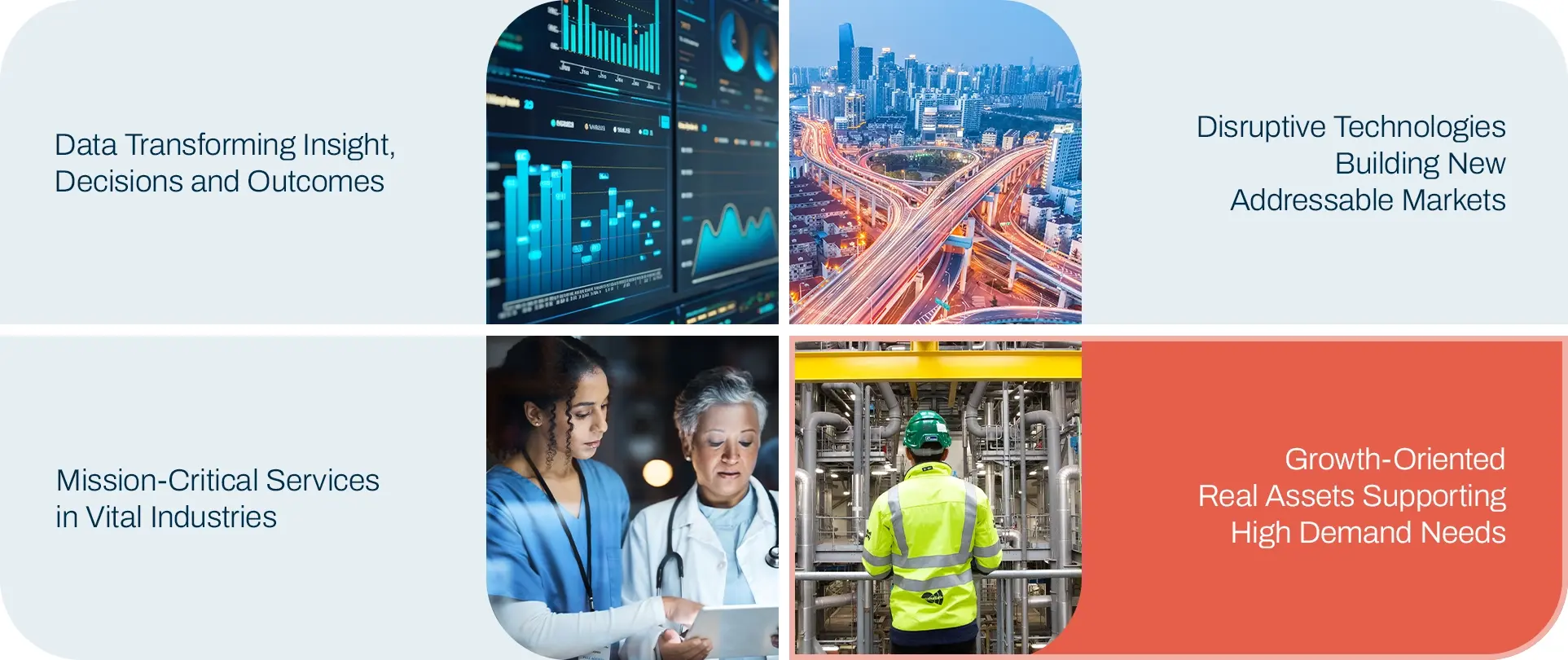This paper, part of a longer series, explores one of four business segments, or quadrants, that we use to pinpoint attractive trends and companies across traditionally broad-based impact investment themes.

Developing real assets for our modern world
The global energy and infrastructure transition is well underway. Out with the old, in with the new? Slowly but surely, and in a responsible way, yes! Modernizing growth-oriented assets like electricity generation, grid storage and waste management can make an impact on environmental and social functions, especially those in high demand. With the antiquated nature of previous infrastructure buildouts, there is ample opportunity to replace old energy systems with new ones. This is where private investments into growth-oriented real assets can help companies solve more real-world problems.
For example, much of our transportation and electricity infrastructure in the U.S. was built around the automobile and fossil fuel-driven energy sources and layered upon over multiple decades. Older models of transportation end grid systems no longer scale as efficiently and bring other long-term consequences from an environmental perspective. Modern upgrades are needed to support the infrastructure needs of a growing population. So, what can be done by developing more impactful real assets?
From improving water and waste management to developing batteries for decentralized grid storage and AI-optimized energy delivery systems, there are ample opportunities. More specifically, solar and wind power investments can deliver renewable energy via decentralized microgrids, not just from the neighborhood powerplant, to improve efficiency and localize distribution. Investments into these growth assets can improve environmental and social outcomes in high demand areas, which we have seen result in greater return potential. How?
Enhancing the old and operationalizing the new
Old energy investments served as the backbone of our economy for many years but are failing to keep up with increasing demands from developing growth areas just as data centers, healthcare complexes and telecommunication hubs. The world has relied on commodity-driven, globally sourced and often volatile resources for much of our energy production, which has taken a toll on the environment and influenced challenging geopolitical dynamics. To overcome these challenges, investors have been funding new ways to meet society's increased energy needs and lower our collective carbon footprint. Some of their strategies include investing in growth-oriented assets driven by innovations that are cleaner and more efficient solutions.
Growth-oriented real asset investments can generate higher returns because they solve challenges that previously proved cost-prohibitive, like getting the appropriate permits to construct and operate new energy projects. Private capital can support the revitalization and reimagining of old infrastructure to make these growth-oriented assets more valuable from both an investment and impact perspective.
Viridor is one such example. As one of the largest recycling and waste-to-energy businesses in the UK, this established infrastructure company needed to be optimized. Older parts of the business became inefficient over time and led to lower performance, decreasing its overall impact. So, how was Viridor able to modernize its assets to scale the business and become more impactful?
It sold off lower-returning business units like its landfill to focus on growing its higher returning recycling business, which required more capital to build systems that efficiently convert waste into energy. The reorganization optimized business performance and helped its growth-oriented assets become better investments too.
Growing the real assets opportunity set
Building out the right real assets to support the needs of a growing global population and a changing climate requires a balance of diligence and an eye to the future. By identifying sought-after opportunities, including growth-oriented real assets, investors can allocate capital to the specific causes that they believe in and benefit from upside potential too. It's a strategy that works for us and which we believe can make a real-world impact for many years to come.
Continue reading about the four business segments that we use to pinpoint attractive trends and companies across traditionally broad-based impact investment themes linked below.